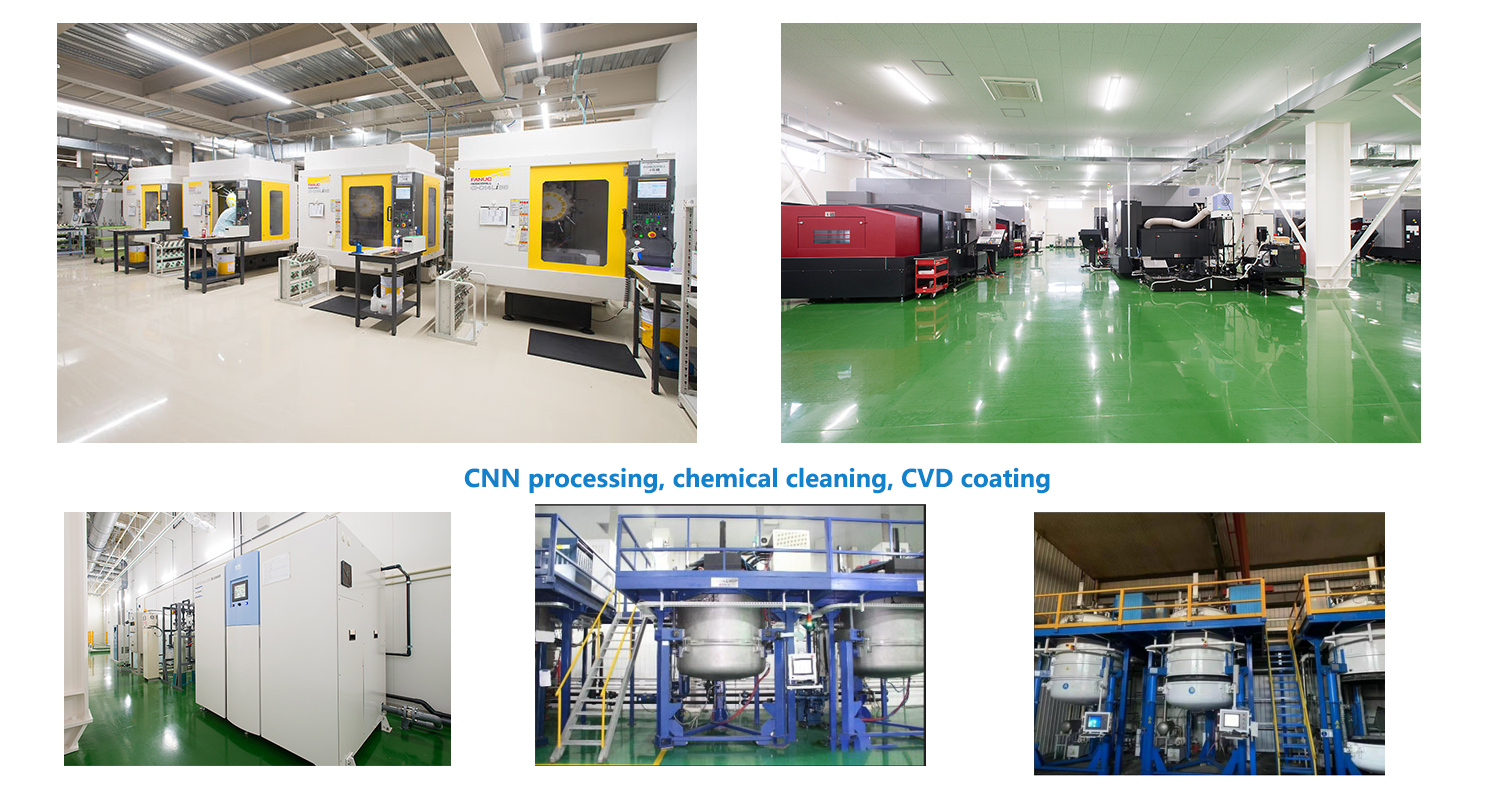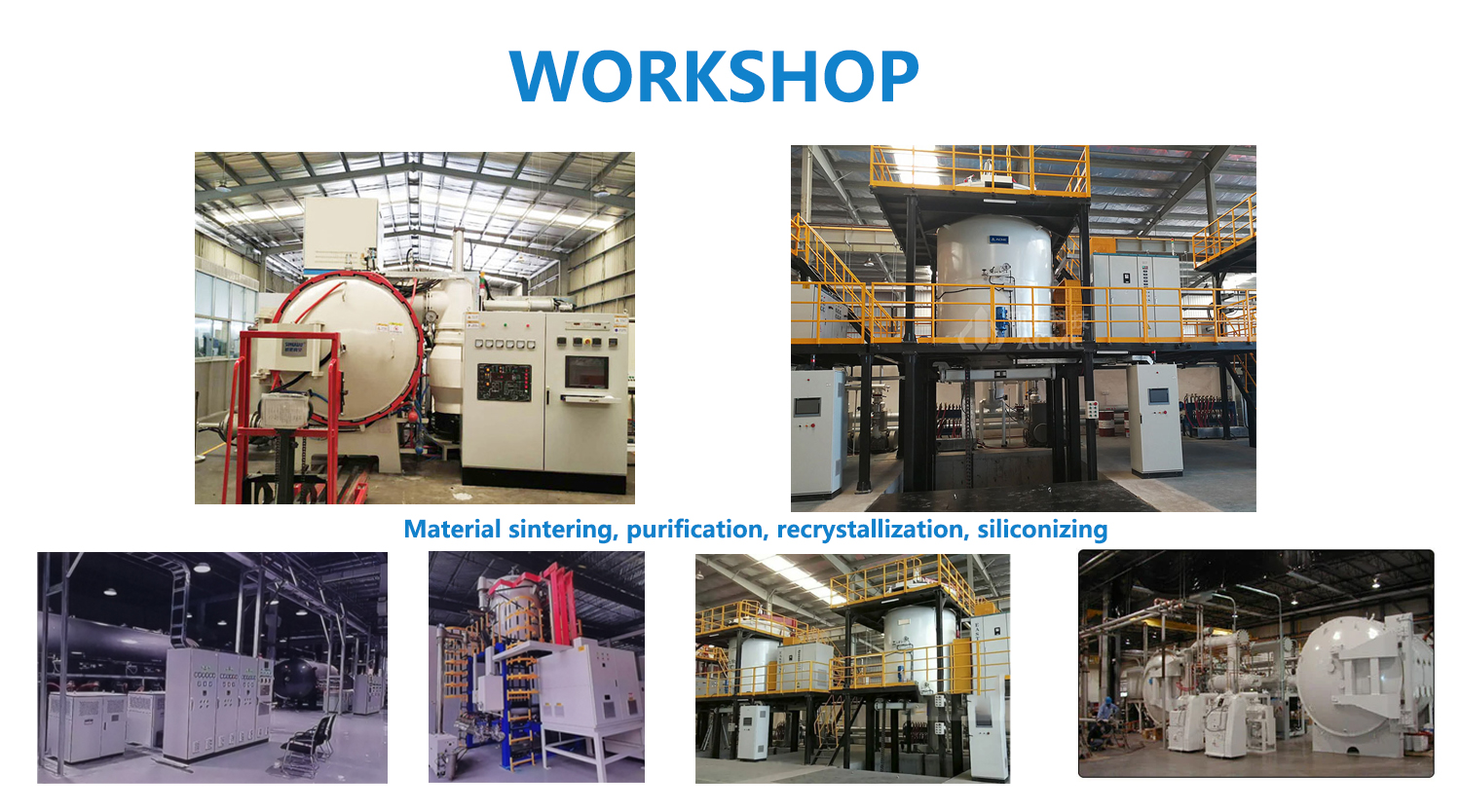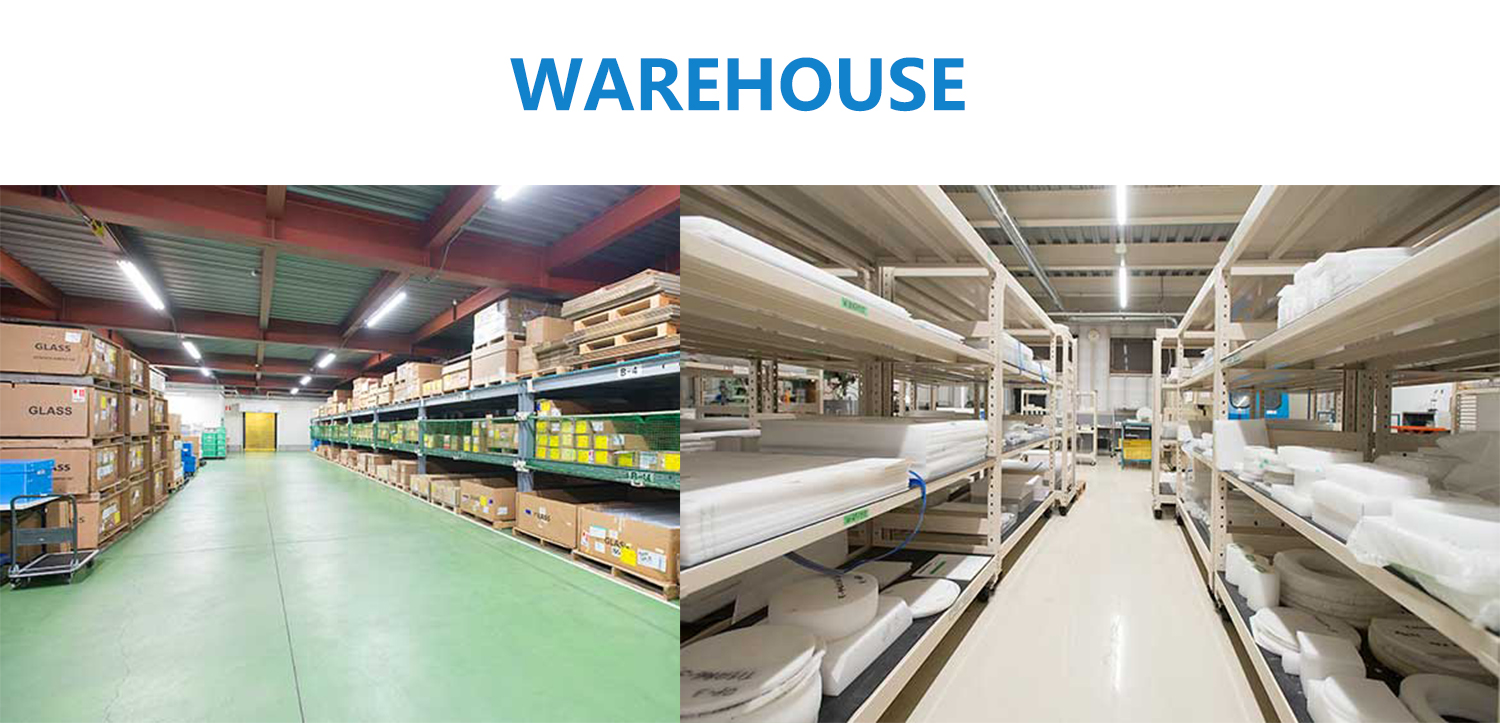
Semiconductor manufacturing encounters significant hurdles that demand innovative solutions. High production costs, scalability challenges, and performance constraints often hinder progress in this critical industry. Semicera addresses these issues with its groundbreaking Silicon Film. This advanced material optimizes manufacturing processes by enhancing efficiency and reducing waste. Its exceptional properties, including high purity and thermal stability, make it indispensable for producing next-generation semiconductors. By integrating cutting-edge technology, Silicon Film empowers manufacturers to achieve superior results while meeting the growing demand for advanced electronics.
Key Takeaways
- Silicon Film significantly reduces production costs by utilizing thinner silicon layers, allowing manufacturers to save on raw materials without sacrificing quality.
- By minimizing defects during production, Silicon Film enhances manufacturing yields, leading to higher output and lower operational costs.
The advanced properties of Silicon Film enable the production of smaller, more efficient chips, meeting the growing demand for compact electronics.
- Silicon Film improves thermal management and energy efficiency, preventing overheating and enhancing the reliability of semiconductor devices.
- Its exceptional electrical properties support faster data processing, making it essential for advanced technologies like AI and quantum computing.
- Silicon Film integrates seamlessly with emerging technologies, including 3D chip architectures, facilitating the development of high-performance devices.
Adopting Silicon Film not only boosts manufacturing efficiency but also contributes to sustainability by reducing material waste and energy consumption.
Key Challenges in Semiconductor Manufacturing

The semiconductor industry faces numerous challenges that hinder progress and innovation.
High Production Costs
Expensive raw materials and fabrication processes.
The cost of sourcing pure silicon and other essential materials often escalates due to stringent quality requirements. Advanced manufacturing processes, such as photolithography and etching, further increase production expenses.
Waste and inefficiencies in traditional manufacturing methods.
Traditional semiconductor manufacturing methods often result in significant material waste. During wafer production, a considerable portion of raw materials is discarded due to defects or inefficiencies. This waste not only increases costs but also impacts sustainability efforts. Manufacturers struggle to optimize processes to minimize these losses while maintaining high-quality standards.
Scalability Issues
Difficulty in meeting demand for smaller, more powerful chips.
The demand for compact and powerful chips continues to grow as industries push for miniaturization. However, scaling down chip sizes presents significant challenges. Smaller chips require more precise manufacturing techniques, which are difficult to achieve with traditional methods. Meeting this demand often requires substantial investments in new technologies and equipment.
Limitations of traditional materials in scaling down chip sizes.
Conventional materials used in semiconductor manufacturing face limitations when scaling down to nanometer dimensions. These materials often fail to maintain their structural and electrical properties at smaller scales. As a result, manufacturers encounter difficulties in producing chips that meet performance expectations while adhering to size constraints.
Performance Limitations
Heat dissipation and energy efficiency concerns.
Modern semiconductor devices generate significant heat during operation. Effective heat dissipation becomes critical to ensure device reliability and performance. Traditional materials and designs often struggle to manage thermal loads efficiently, leading to overheating and reduced energy efficiency. This challenge becomes more pronounced as devices become smaller and more powerful.
Challenges in achieving higher processing speeds.
Achieving higher processing speeds requires materials with superior electrical properties. Traditional materials often introduce resistance and signal delays, limiting the speed of data processing. These limitations hinder the development of faster and more efficient semiconductor devices, which are essential for advanced applications like artificial intelligence and quantum computing.
How Silicon Film Solves These Challenges
Cost Reduction
Lower material costs due to thinner layers of silicon.
Semicera’s Silicon Film significantly reduces material expenses by utilizing thinner silicon layers without compromising quality. This innovation minimizes the amount of raw silicon required during production. Manufacturers benefit from lower procurement costs while maintaining the high purity essential for semiconductor applications. The precision-engineered nature of the film ensures efficient use of resources, making it a cost-effective solution for the industry.
Improved manufacturing yields by reducing defects.
Silicon Film enhances manufacturing yields by minimizing defects during production. Its exceptional uniformity and high purity reduce the likelihood of imperfections in semiconductor wafers. This improvement leads to fewer rejected components and higher overall output. By addressing defect-related inefficiencies, manufacturers achieve greater consistency and reliability in their production processes, ultimately lowering operational costs.
Enhanced Scalability
Enables the production of smaller, more efficient chips.
The advanced properties of Silicon Film enable the creation of smaller and more efficient semiconductor chips. Its compatibility with cutting-edge manufacturing techniques supports the development of compact designs without sacrificing performance. This capability allows manufacturers to meet the growing demand for miniaturized electronics, which are essential for modern devices such as smartphones and wearables.
Supports advanced lithography techniques for miniaturization.
Silicon Film integrates seamlessly with advanced lithography techniques, facilitating the miniaturization of semiconductor components. Its precision thickness and uniformity provide a stable foundation for intricate patterning processes. This compatibility ensures that manufacturers can produce chips with finer features, meeting the stringent requirements of next-generation technologies.
Improved Performance
Better thermal management and energy efficiency.
The superior thermal properties of Silicon Film enhance heat dissipation in semiconductor devices. By efficiently managing thermal loads, the film prevents overheating and improves device reliability. Its contribution to energy efficiency also reduces power consumption, making it an ideal choice for applications requiring sustainable and high-performance solutions.
Enhanced electrical properties for faster processing speeds.
Silicon Film offers exceptional electrical properties that support faster data processing. Its high conductivity and low defect rates enable the production of semiconductors with superior performance. These attributes are critical for achieving the processing speeds demanded by advanced technologies, including artificial intelligence and quantum computing. Manufacturers rely on this material to push the boundaries of semiconductor performance.
Innovations in Silicon Film Technology
Advanced Deposition Techniques
Precision control over film thickness and uniformity.
Semicera employs advanced deposition techniques to ensure precise control over the thickness and uniformity of Silicon Film. These techniques allow manufacturers to achieve consistent results across large-scale production. Uniform film thickness enhances the performance of semiconductor devices by reducing variability and ensuring reliable electrical properties. This precision minimizes the risk of defects, which is critical for maintaining high-quality standards in semiconductor manufacturing.
Reduced waste during the manufacturing process.
The innovative deposition methods used for Silicon Film significantly reduce material waste. By optimizing the application process, manufacturers can utilize raw materials more efficiently. This approach not only lowers production costs but also supports sustainability efforts within the industry. Reduced waste translates to a smaller environmental footprint, aligning with the growing demand for eco-friendly manufacturing practices.
Integration with Emerging Technologies
Compatibility with 3D chip architectures.
Silicon Film demonstrates exceptional compatibility with 3D chip architectures, a key innovation in modern semiconductor design. Its unique properties enable seamless integration into multi-layered structures, which are essential for increasing processing power without expanding the physical size of chips. This compatibility supports the development of compact, high-performance devices that meet the needs of industries such as consumer electronics and telecommunications.
Applications in quantum computing and AI hardware.
The advanced properties of Silicon Film make it an ideal material for cutting-edge applications in quantum computing and artificial intelligence (AI) hardware. Its superior electrical and thermal characteristics provide the stability required for quantum devices, which rely on precise control of quantum states. In AI hardware, the film enhances processing speeds and energy efficiency, enabling the creation of powerful systems capable of handling complex computations. These applications highlight the pivotal role of Silicon Film in shaping the future of technology.
Real-World Applications and Industry Impact

Adoption in Leading Semiconductor Companies
Examples of companies using Semicera’s Silicon Film in production.
Several prominent semiconductor manufacturers have integrated Semicera’s Silicon Film into their production lines. These companies prioritize innovation and efficiency, making the film an ideal choice for their advanced manufacturing needs. By leveraging its high purity and uniformity, these manufacturers achieve consistent results in producing high-performance semiconductors. The adoption of this material underscores its reliability and effectiveness in meeting the rigorous demands of modern semiconductor fabrication.
Case studies showcasing efficiency improvements.
Case studies highlight the transformative impact of Silicon Film on manufacturing efficiency. One leading semiconductor company reported a significant reduction in defect rates after incorporating the film into its wafer production process. This improvement led to higher yields and lower operational costs. Another case study demonstrated how the film’s superior thermal properties enhanced the performance of power electronics, enabling the production of more energy-efficient devices. These examples illustrate how Silicon Film drives measurable advancements in semiconductor manufacturing.
Broader Industry Implications
Contribution to the development of next-generation electronics.
Silicon Film plays a pivotal role in the creation of next-generation electronics. Its exceptional electrical and thermal properties enable the production of components essential for cutting-edge technologies. From microprocessors to optoelectronic devices, the film supports the development of smaller, faster, and more efficient products. This contribution accelerates innovation across industries, including consumer electronics, telecommunications, and automotive technology.
Role in meeting global demand for advanced semiconductors.
The global demand for advanced semiconductors continues to rise, driven by the proliferation of smart devices and emerging technologies. Silicon Film addresses this demand by enabling scalable and efficient manufacturing processes. Its compatibility with advanced techniques ensures that manufacturers can produce high-quality semiconductors at scale. By supporting the industry’s capacity to meet growing needs, the film strengthens the supply chain and fosters technological progress worldwide.
Semicera’s Silicon Film provides a groundbreaking solution to the challenges in semiconductor manufacturing. It addresses cost inefficiencies, scalability hurdles, and performance constraints with precision-engineered technology. By streamlining production processes and enhancing material properties, it empowers manufacturers to achieve superior results. This innovation is reshaping the industry, enabling the creation of advanced electronics that meet modern demands. As technology progresses, Silicon Film will remain a cornerstone in driving efficiency and innovation in semiconductor manufacturing, ensuring its relevance in the evolving landscape.
FAQ
What is Silicon Film, and how does it differ from traditional materials?
These attributes make it ideal for advanced applications, such as Si Wafer, SOI Wafer, and Epi-Wafer production, where precision and performance are critical.
How does Silicon Film contribute to cost reduction in semiconductor manufacturing?
Silicon Film reduces costs by utilizing thinner silicon layers, which minimizes raw material usage without compromising quality. Its high uniformity and low defect rates improve manufacturing yields, leading to fewer rejected components and lower operational expenses. These efficiencies make it a cost-effective solution for manufacturers.
Can Silicon Film support the production of smaller and more efficient chips?
Yes, Silicon Film enables the production of smaller and more efficient chips. Its compatibility with advanced lithography techniques allows manufacturers to create intricate patterns and miniaturized designs. This capability meets the growing demand for compact electronics, such as smartphones and wearable devices.
What role does Silicon Film play in improving semiconductor performance?
Silicon Film enhances performance through its superior thermal and electrical properties. It efficiently manages heat dissipation, preventing overheating and improving device reliability. Its high conductivity supports faster data processing, making it essential for advanced technologies like artificial intelligence and quantum computing.
Is Silicon Film compatible with emerging technologies like 3D chip architectures?
Silicon Film integrates seamlessly with 3D chip architectures. Its unique properties allow it to function effectively in multi-layered structures, increasing processing power without expanding chip size. This compatibility supports the development of compact, high-performance devices for industries such as telecommunications and consumer electronics.
How does Silicon Film contribute to sustainability in semiconductor manufacturing?
Silicon Film promotes sustainability by reducing material waste during production. Advanced deposition techniques ensure efficient use of raw materials, minimizing environmental impact. Its role in improving energy efficiency in semiconductor devices further supports eco-friendly manufacturing practices.
What industries benefit most from using Silicon Film?
Industries such as consumer electronics, telecommunications, automotive technology, and artificial intelligence benefit significantly from Silicon Film. Its properties enable the production of high-performance semiconductors used in microprocessors, integrated circuits, and optoelectronic devices, driving innovation across these sectors.
Are there real-world examples of companies using Silicon Film?
Yes, several leading semiconductor manufacturers have adopted Silicon Film in their production processes. Case studies highlight its impact, such as reduced defect rates and improved thermal management. These examples demonstrate how Silicon Film enhances efficiency and performance in real-world applications.
How does Silicon Film address the global demand for advanced semiconductors?
Silicon Film supports scalable and efficient manufacturing processes, enabling the production of high-quality semiconductors at scale. Its compatibility with advanced techniques ensures manufacturers can meet the rising demand for next-generation electronics, strengthening the global semiconductor supply chain.
Why should manufacturers choose Semicera’s Silicon Film?
Manufacturers should choose Silicon Film for its unmatched quality, precision, and performance. Its high purity, thermal stability, and mechanical strength meet the rigorous standards of modern semiconductor manufacturing. By integrating Silicon Film, manufacturers can achieve superior results and stay competitive in a rapidly evolving industry.